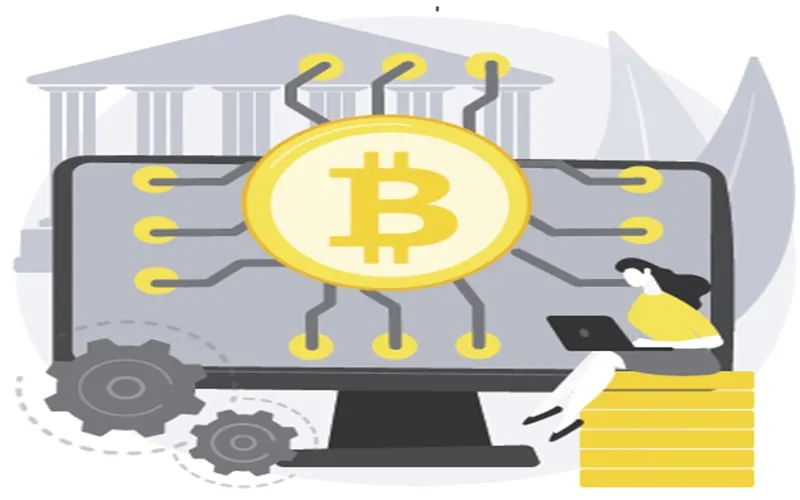As we are growing in a digital world, the digital technologies are growing with us at a very fast pace. One thing that is now becoming familiar is Cryptocurrency. It exists in electronic form, in a digital manner. Records of transaction are stored in a computerised database known as ledger. Cryptocurrencies make the transfer of funds easier as there is no third party involved, such as a bank or a credit card company.
In 2008, a pseudonymous Satoshi Nakamoto posted a white paper describing an implementation of a digital currency called Bitcoin that used blockchain technology. More than ten years later, hundreds of Cryptocurrencies and innumerable other applications of blockchain technology are readily available.
This time there are more than 1000 different Cryptocurrencies that are traded publicly and Bitcoin is the most famous one. The concept of cryptography is used to secure the records of the transaction, to control the creation of new coins and also for the verification of ownership. Such currency follows the concept of decentralisation, meaning no involvement of a third party. All the transactions can be tracked publicly, not a single individual or entity can change the data making its security safe for use.
Cryptocurrency is gaining popularity in the Indian online market. One of the reasons is that for a traditional Indian the main source of saving was gold, and with increasing technological ease, crypto is emerging as a kind of digital gold. The advanced currency has democratised the currency and opened up avenues for international transactions. A small amount of transactions is lost due to transfer and currency conversion fees, like in other currency charges. Cryptocurrencies save money and time for both the sender and the receiver because they are conducted entirely on the Internet, use a mechanism with very low transaction fee, and are almost instantaneous. The rise of Cryptocurrencies can cause threat to many traditional functions in finance. For example, no bank account or credit card is needed to transact in the world of Cryptocurrencies. Indeed, a Cryptocurrency “wallet” serves the same function as a bank vault. India has a lot to gain if Bitcoin and blockchain become mainstream and are not restricted by strict regulatory constraints.
Bitcoin can or cannot be money. What may appear as a straightforward question turns out to be anything but clear. If we want to know how Bitcoin can be money, we must first gain clarity on what we mean by money. Any individual or entity presently, that are ready to work with Cryptocurrencies, or we can say with Bitcoin, needs to have clear understanding of all the processes, laws of the digital currencies, and its usage; and should consult a financial / accounting professionals for guidance. As in India, also in J&K, a number of people & professionals are starting working with the Cryptocurrencies so education about digital currencies has become need of an hour.
Especially, individuals presently working with Bitcoin and other Cryptocurrencies may have clear understanding of the information technology, its databases and other technologies involved in process, storing, execution, and transfer of digital currencies. One of the basic things is the use of Blockchain technology. Blockchain is a type of shared database that differs from a typical database in the way that it stores information; blockchain store data in blocks that are then linked together via cryptography. As new data comes in, it is entered into a fresh block. Once the block is filled with data, it is chained onto the previous block, which makes the data chained together in chronological order. In Bitcoin’s case, blockchain is used in a decentralised way so that no single person or group has control, rather all users collectively retain control.
Decentralised blockchain are immutable, which means that the data entered is irreversible. For Bitcoin, this means that transactions are permanently recorded and viewable to anyone. If I talk about the security of the Blockchain, this technology achieves decentralised security and trust in several ways. To begin with, new blocks are always stored linearly and chronologically. That is, they are always added to the “end” of the blockchain. After a block has been added to the end of the blockchain, it is extremely difficult to go back and alter the contents of the block unless a majority of the network has reached a consensus to do so. That’s because each block contains its own hash, along with the hash of the block before it, as well as the previously mentioned time stamp. Hash codes are created by a mathematical function that turns digital information into a string of numbers and letters. If that information is edited in any way, then the hash code changes as well. As things stand the security is excellent, but hackers, and malware can’t be avoided.
The government will move a bill to frame rules for Cryptocurrencies aimed at prohibiting private coin while providing a framework for the creation of an official digital currency to be issued by the Reserve Bank of India (RBI). The bill is listed among 26 items of legislation for consideration in the winter session of parliament, according to a bulletin issued by the Lok Sabha. The crypto industry is hopeful that there won’t be a complete ban on Cryptocurrencies. “The bill also seeks to prohibit all private Cryptocurrencies in India. However, it allows for certain exceptions to promote the underlying technology of Cryptocurrency and its uses,” the bulletin said with regard to the Cryptocurrency and Regulation of Official Digital Currency Bill, 2021. It also seeks “to create a facilitative framework for creation of the official digital currency to be issued by the Reserve Bank of India.”
Khalid Mustafa is IT & Management Professional
Disclaimer: The views and opinions expressed in this article are the personal opinions of the author. The facts, analysis, assumptions and perspective appearing in the article do not reflect the views of GK.






